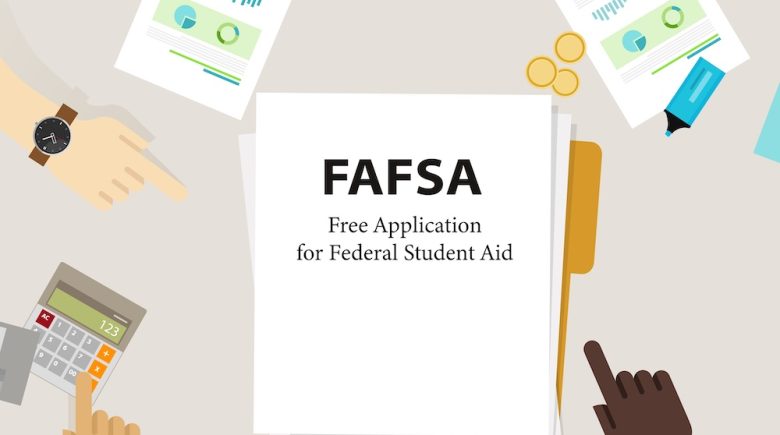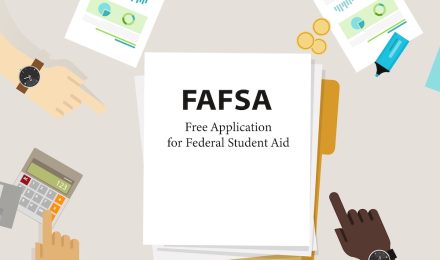The Free Application for Federal Student Aid (FAFSA) has long been the entry point for millions of American students seeking federal grants, loans, and work-study opportunities. Yet the process has often been criticized as overly complex, requiring detailed financial disclosures that overwhelmed many families. Recognizing these challenges, Congress and the U.S. Department of Education launched the “Better FAFSA” initiative, a sweeping simplification designed to reduce barriers to aid.
By 2025, the new FAFSA system was meant to be fully operational, with fewer questions, improved data sharing, and clearer calculations of need. However, the rollout has been rocky, with delays and technical glitches complicating the transition. For students, parents, and institutions, understanding both the benefits and the pitfalls of FAFSA simplification is crucial.
Why FAFSA Needed Simplification
For decades, FAFSA required families to provide detailed financial information, sometimes repeating data already reported on federal tax forms. The process was especially difficult for low-income and first-generation students, many of whom were discouraged from applying. Research consistently showed that complexity alone kept thousands of eligible students from accessing aid each year.
In response, policymakers aimed to streamline the form, reduce redundancy, and align it more closely with federal tax data. The goal was to ensure that aid decisions reflect accurate, up-to-date financial information while minimizing administrative burdens.
The New Student Aid Index
A major change introduced through simplification is the replacement of the Expected Family Contribution (EFC) with the Student Aid Index (SAI). The EFC was widely misunderstood, often leading families to believe it represented the exact amount they were expected to pay. In reality, it was only a benchmark for aid eligibility.
The SAI is designed to be clearer and, in some cases, more generous. Families with very low or negative SAIs can now qualify for the maximum Pell Grant, while higher-income families will still see limited eligibility. Although the change is largely technical, it has significant implications for how much aid students receive.
Delays in Implementation
The rollout of the simplified FAFSA has faced repeated delays. While the Department of Education promised a streamlined system, technical issues and integration problems slowed progress. Many families encountered website crashes, incomplete calculations, or long processing times during the initial filing period.
These delays have real consequences. Colleges and universities rely on FAFSA data to prepare financial aid packages, and disruptions can delay admissions decisions or force students to commit without a clear understanding of their aid eligibility. High school seniors in particular face difficult choices when deadlines for enrollment and housing coincide with FAFSA processing backlogs.
Benefits of the New System
Despite these challenges, the simplified FAFSA holds several long-term benefits:
- The number of required questions has been reduced from over 100 to fewer than 40, eliminating much of the duplication and confusion.
- Integration with IRS tax data allows for more accurate income reporting, reducing errors and the need for verification.
These improvements are expected to increase the number of students completing the FAFSA, especially among those who previously found the process intimidating. Over time, higher completion rates could translate into greater access to federal grants and loans.
Impact on Institutions
Colleges and universities have also had to adapt to the new FAFSA environment. Financial aid offices must navigate shifting eligibility rules, recalibrate their aid formulas, and respond to increased student inquiries. Institutions serving large numbers of first-generation or low-income students are particularly affected, as their students depend heavily on timely and accurate FAFSA results.
Some schools have extended enrollment deposit deadlines to give families more time, but not all institutions can accommodate delays without financial strain. The uneven responses across campuses risk creating inequities in student decision-making.
Equity Considerations
Simplification is meant to help those most in need, but its success depends on execution. Students without stable internet access or reliable technology may still struggle to complete the new FAFSA. Language barriers, while somewhat addressed through multilingual support, remain a hurdle for many families.
There is also concern that middle-income families, who may see reduced grant eligibility under the new SAI, will shoulder greater burdens. For these households, the simplification process may feel less like an improvement and more like a shift in policy priorities.
Preparing Families for the Transition
For students and parents, the most important step is to approach FAFSA early and persistently. Filing as soon as the application opens increases the chances of resolving technical problems before critical deadlines. Families should also stay in close contact with financial aid offices, which can provide updates on processing timelines and institutional adjustments.
Advisors recommend gathering tax information in advance and using the IRS data transfer tool whenever possible to avoid errors. Families with unique financial situations, such as recent job losses or medical expenses, should prepare documentation for a professional judgment appeal, as the new FAFSA may not fully capture sudden changes in ability to pay.
Long-Term Outlook
Despite current frustrations, FAFSA simplification is expected to improve the aid process in the long run. By reducing paperwork and aligning data more effectively, the system should encourage more students to apply and qualify for assistance. However, policymakers will need to monitor implementation closely, making adjustments to ensure that technical issues do not undermine the intended benefits.
The reforms also highlight a broader policy debate: how to balance equity and efficiency in student aid. Simplification may improve access for some groups but limit benefits for others, depending on how formulas and grant allocations evolve. As Congress continues to reshape student loan programs and federal aid budgets, the FAFSA will remain central to these discussions.
Conclusion
FAFSA simplification represents both promise and frustration. On one hand, the new system reduces paperwork, clarifies eligibility, and expands access for the lowest-income families. On the other, technical delays and shifting eligibility formulas have created new uncertainties for students navigating the college decision process in 2025.
Families who file early, stay engaged with financial aid offices, and prepare for potential appeals will be best positioned to navigate the transition. For policymakers, the challenge is to ensure that simplification delivers on its promise of making aid more accessible, rather than adding new barriers at a critical moment in students’ educational journeys.
References
- U.S. Department of Education – FAFSA Simplification Act
- HEAG – 2025 Budget Law: Key Changes to Student Aid Programs
- National College Attainment Network – FAFSA Simplification Resources
The Free Application for Federal Student Aid (FAFSA) has long been the entry point for millions of American students seeking federal grants, loans, and work-study opportunities. Yet the process has often been criticized as overly complex, requiring detailed financial disclosures that overwhelmed many families. Recognizing these challenges, Congress and the U.S. Department of Education launched the “Better FAFSA” initiative, a sweeping simplification designed to reduce barriers to aid.
By 2025, the new FAFSA system was meant to be fully operational, with fewer questions, improved data sharing, and clearer calculations of need. However, the rollout has been rocky, with delays and technical glitches complicating the transition. For students, parents, and institutions, understanding both the benefits and the pitfalls of FAFSA simplification is crucial.
Why FAFSA Needed Simplification
For decades, FAFSA required families to provide detailed financial information, sometimes repeating data already reported on federal tax forms. The process was especially difficult for low-income and first-generation students, many of whom were discouraged from applying. Research consistently showed that complexity alone kept thousands of eligible students from accessing aid each year.
In response, policymakers aimed to streamline the form, reduce redundancy, and align it more closely with federal tax data. The goal was to ensure that aid decisions reflect accurate, up-to-date financial information while minimizing administrative burdens.
The New Student Aid Index
A major change introduced through simplification is the replacement of the Expected Family Contribution (EFC) with the Student Aid Index (SAI). The EFC was widely misunderstood, often leading families to believe it represented the exact amount they were expected to pay. In reality, it was only a benchmark for aid eligibility.
The SAI is designed to be clearer and, in some cases, more generous. Families with very low or negative SAIs can now qualify for the maximum Pell Grant, while higher-income families will still see limited eligibility. Although the change is largely technical, it has significant implications for how much aid students receive.
Delays in Implementation
The rollout of the simplified FAFSA has faced repeated delays. While the Department of Education promised a streamlined system, technical issues and integration problems slowed progress. Many families encountered website crashes, incomplete calculations, or long processing times during the initial filing period.
These delays have real consequences. Colleges and universities rely on FAFSA data to prepare financial aid packages, and disruptions can delay admissions decisions or force students to commit without a clear understanding of their aid eligibility. High school seniors in particular face difficult choices when deadlines for enrollment and housing coincide with FAFSA processing backlogs.
Benefits of the New System
Despite these challenges, the simplified FAFSA holds several long-term benefits:
- The number of required questions has been reduced from over 100 to fewer than 40, eliminating much of the duplication and confusion.
- Integration with IRS tax data allows for more accurate income reporting, reducing errors and the need for verification.
These improvements are expected to increase the number of students completing the FAFSA, especially among those who previously found the process intimidating. Over time, higher completion rates could translate into greater access to federal grants and loans.
Impact on Institutions
Colleges and universities have also had to adapt to the new FAFSA environment. Financial aid offices must navigate shifting eligibility rules, recalibrate their aid formulas, and respond to increased student inquiries. Institutions serving large numbers of first-generation or low-income students are particularly affected, as their students depend heavily on timely and accurate FAFSA results.
Some schools have extended enrollment deposit deadlines to give families more time, but not all institutions can accommodate delays without financial strain. The uneven responses across campuses risk creating inequities in student decision-making.
Equity Considerations
Simplification is meant to help those most in need, but its success depends on execution. Students without stable internet access or reliable technology may still struggle to complete the new FAFSA. Language barriers, while somewhat addressed through multilingual support, remain a hurdle for many families.
There is also concern that middle-income families, who may see reduced grant eligibility under the new SAI, will shoulder greater burdens. For these households, the simplification process may feel less like an improvement and more like a shift in policy priorities.
Preparing Families for the Transition
For students and parents, the most important step is to approach FAFSA early and persistently. Filing as soon as the application opens increases the chances of resolving technical problems before critical deadlines. Families should also stay in close contact with financial aid offices, which can provide updates on processing timelines and institutional adjustments.
Advisors recommend gathering tax information in advance and using the IRS data transfer tool whenever possible to avoid errors. Families with unique financial situations, such as recent job losses or medical expenses, should prepare documentation for a professional judgment appeal, as the new FAFSA may not fully capture sudden changes in ability to pay.
Long-Term Outlook
Despite current frustrations, FAFSA simplification is expected to improve the aid process in the long run. By reducing paperwork and aligning data more effectively, the system should encourage more students to apply and qualify for assistance. However, policymakers will need to monitor implementation closely, making adjustments to ensure that technical issues do not undermine the intended benefits.
The reforms also highlight a broader policy debate: how to balance equity and efficiency in student aid. Simplification may improve access for some groups but limit benefits for others, depending on how formulas and grant allocations evolve. As Congress continues to reshape student loan programs and federal aid budgets, the FAFSA will remain central to these discussions.
Conclusion
FAFSA simplification represents both promise and frustration. On one hand, the new system reduces paperwork, clarifies eligibility, and expands access for the lowest-income families. On the other, technical delays and shifting eligibility formulas have created new uncertainties for students navigating the college decision process in 2025.
Families who file early, stay engaged with financial aid offices, and prepare for potential appeals will be best positioned to navigate the transition. For policymakers, the challenge is to ensure that simplification delivers on its promise of making aid more accessible, rather than adding new barriers at a critical moment in students’ educational journeys.







